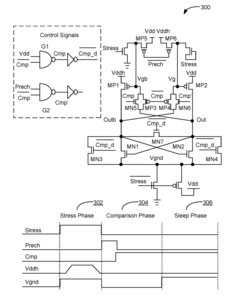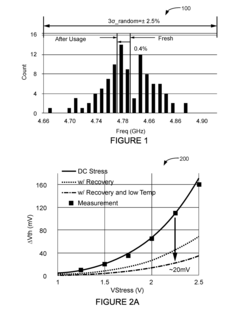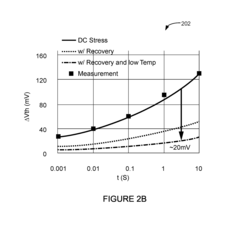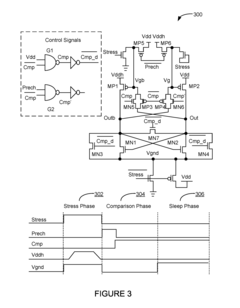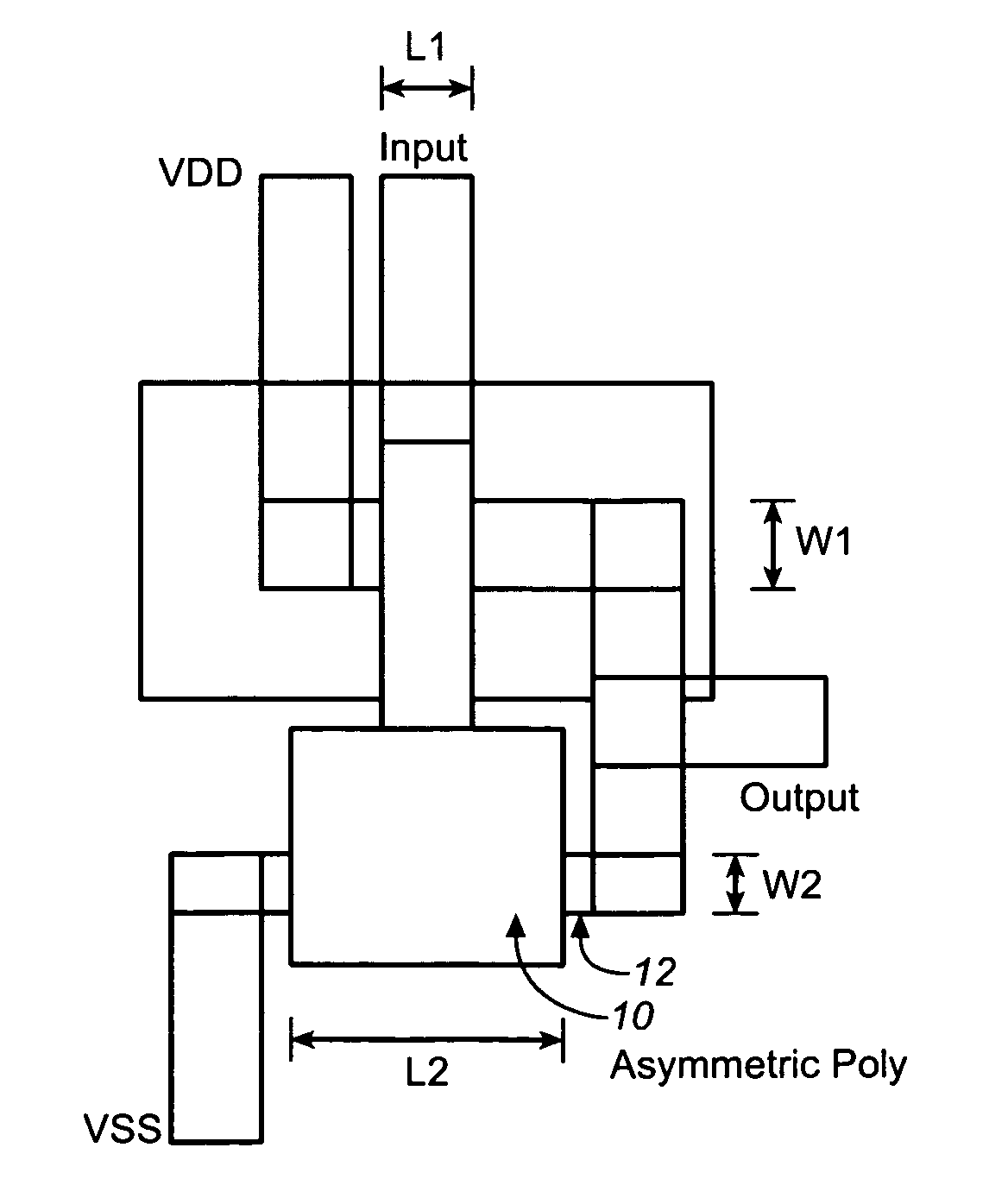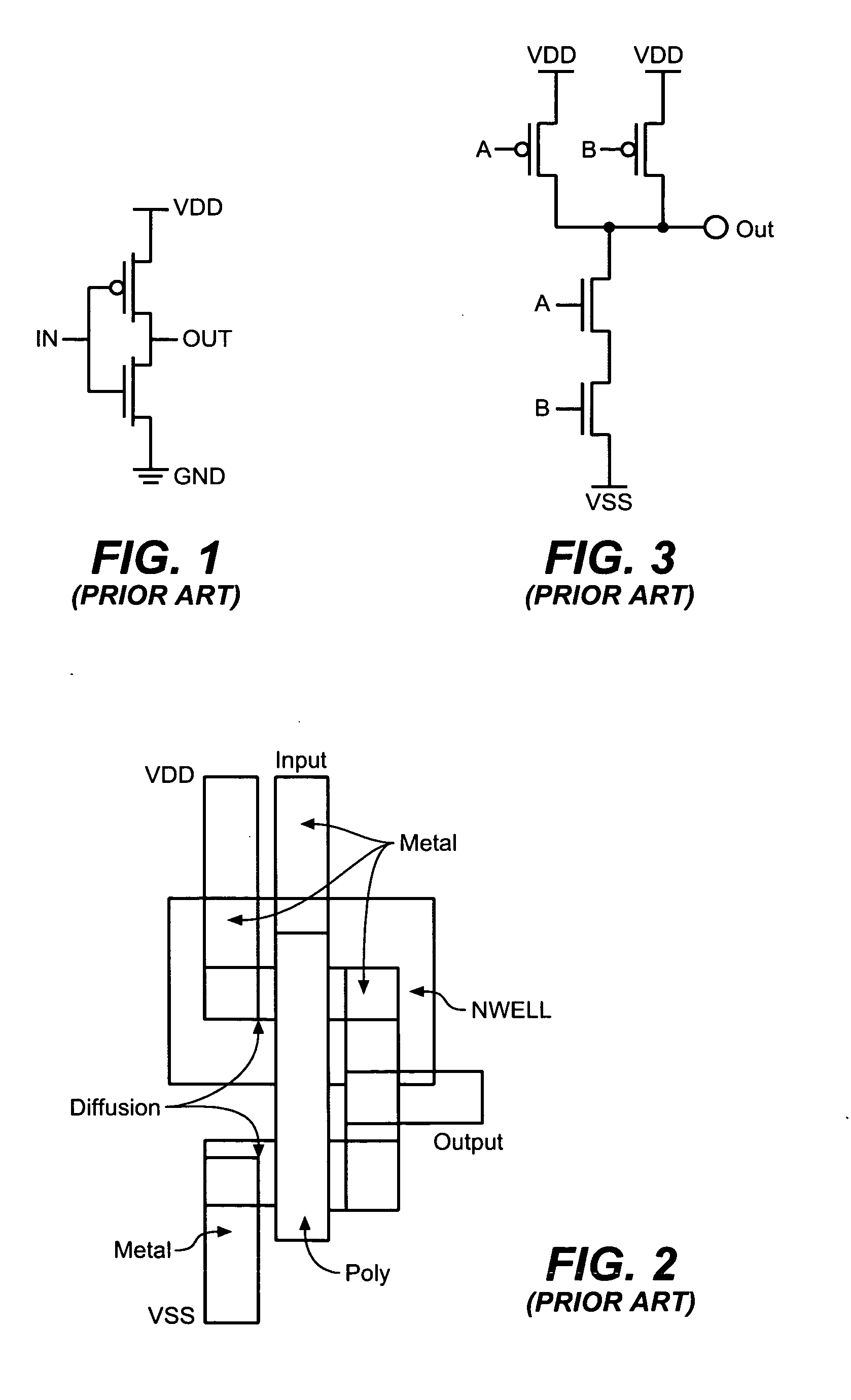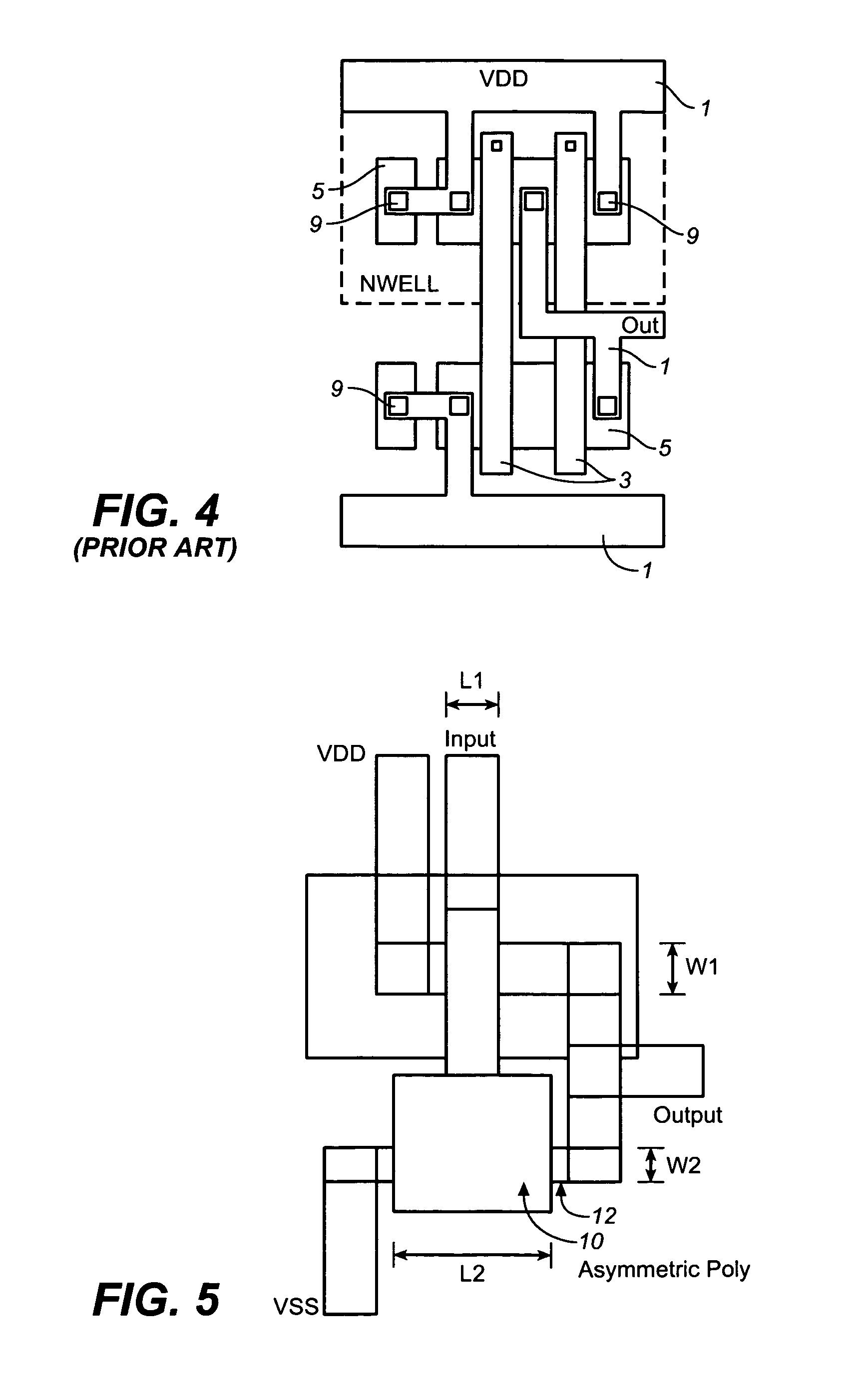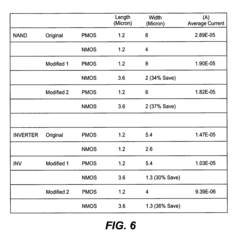How CMOS Battery Inspires Visionary Industry Transformations?
JUL 22, 20259 MIN READ
Generate Your Research Report Instantly with AI Agent
Patsnap Eureka helps you evaluate technical feasibility & market potential.
CMOS Battery Evolution
The evolution of CMOS battery technology has been a remarkable journey, spanning several decades and revolutionizing the way we power electronic devices. Initially developed in the 1960s, Complementary Metal-Oxide-Semiconductor (CMOS) technology laid the foundation for low-power, high-efficiency integrated circuits. The CMOS battery, a small but crucial component, emerged as a solution to maintain critical system settings and real-time clock functions in computers and other electronic devices.
In the early 1980s, the first CMOS batteries were introduced, typically using lithium-based chemistries due to their long shelf life and stable voltage output. These batteries were designed to provide a constant, low-level power supply to maintain memory and clock functions when the main power was disconnected. As personal computers became more prevalent, the importance of CMOS batteries grew, ensuring that system configurations and time settings remained intact between power cycles.
The 1990s saw significant improvements in CMOS battery technology, with manufacturers focusing on increasing capacity and longevity. Rechargeable versions began to appear, allowing the battery to be replenished during normal system operation. This development reduced the need for frequent battery replacements and improved overall system reliability. Concurrently, the size of CMOS batteries continued to decrease, aligning with the broader trend of miniaturization in electronics.
As we entered the 2000s, the role of CMOS batteries expanded beyond traditional computing devices. They found applications in a wide range of electronic systems, from automotive electronics to industrial control systems. The demand for more environmentally friendly solutions led to the development of CMOS batteries with reduced toxic materials, addressing growing concerns about electronic waste.
In recent years, the evolution of CMOS battery technology has been driven by the need for even longer lifespans and higher energy densities. Advanced lithium-ion and solid-state technologies are being explored to create CMOS batteries that can last for decades without replacement. These developments are particularly crucial for IoT devices and remote sensing applications, where frequent battery changes are impractical or impossible.
The ongoing miniaturization of electronic devices has pushed CMOS battery technology to new limits. Researchers are now investigating nanoscale energy storage solutions that could potentially integrate CMOS functionality directly into chip designs, eliminating the need for separate battery components altogether. This convergence of power source and circuitry represents a potential paradigm shift in how we approach system design and energy management in electronic devices.
Looking forward, the evolution of CMOS battery technology is likely to focus on sustainability, integration, and adaptability. As the electronics industry moves towards more sustainable practices, we can expect to see CMOS batteries designed with recyclable materials and energy harvesting capabilities. The future may also bring smart CMOS batteries with built-in diagnostics and predictive maintenance features, further enhancing the reliability and longevity of electronic systems.
In the early 1980s, the first CMOS batteries were introduced, typically using lithium-based chemistries due to their long shelf life and stable voltage output. These batteries were designed to provide a constant, low-level power supply to maintain memory and clock functions when the main power was disconnected. As personal computers became more prevalent, the importance of CMOS batteries grew, ensuring that system configurations and time settings remained intact between power cycles.
The 1990s saw significant improvements in CMOS battery technology, with manufacturers focusing on increasing capacity and longevity. Rechargeable versions began to appear, allowing the battery to be replenished during normal system operation. This development reduced the need for frequent battery replacements and improved overall system reliability. Concurrently, the size of CMOS batteries continued to decrease, aligning with the broader trend of miniaturization in electronics.
As we entered the 2000s, the role of CMOS batteries expanded beyond traditional computing devices. They found applications in a wide range of electronic systems, from automotive electronics to industrial control systems. The demand for more environmentally friendly solutions led to the development of CMOS batteries with reduced toxic materials, addressing growing concerns about electronic waste.
In recent years, the evolution of CMOS battery technology has been driven by the need for even longer lifespans and higher energy densities. Advanced lithium-ion and solid-state technologies are being explored to create CMOS batteries that can last for decades without replacement. These developments are particularly crucial for IoT devices and remote sensing applications, where frequent battery changes are impractical or impossible.
The ongoing miniaturization of electronic devices has pushed CMOS battery technology to new limits. Researchers are now investigating nanoscale energy storage solutions that could potentially integrate CMOS functionality directly into chip designs, eliminating the need for separate battery components altogether. This convergence of power source and circuitry represents a potential paradigm shift in how we approach system design and energy management in electronic devices.
Looking forward, the evolution of CMOS battery technology is likely to focus on sustainability, integration, and adaptability. As the electronics industry moves towards more sustainable practices, we can expect to see CMOS batteries designed with recyclable materials and energy harvesting capabilities. The future may also bring smart CMOS batteries with built-in diagnostics and predictive maintenance features, further enhancing the reliability and longevity of electronic systems.
Market Demand Analysis
The CMOS battery, a small but crucial component in modern electronics, has sparked a wave of innovation across various industries. Market demand for CMOS-inspired technologies has been steadily growing, driven by the increasing need for reliable, long-lasting power sources in a wide range of applications. The global market for CMOS batteries and related technologies is expected to experience significant growth in the coming years, with particular emphasis on sectors such as healthcare, automotive, and consumer electronics.
In the healthcare industry, CMOS-inspired technologies are revolutionizing patient monitoring and medical device design. The demand for wearable health monitors, implantable medical devices, and portable diagnostic equipment has surged, creating a substantial market for long-life, low-power solutions. These devices require reliable power sources that can operate for extended periods without frequent replacement, making CMOS-inspired technologies particularly attractive.
The automotive sector has also shown a strong interest in CMOS-inspired technologies, particularly in the development of electric and autonomous vehicles. As the automotive industry shifts towards more sophisticated electronic systems, the demand for reliable, compact power sources has increased. CMOS-inspired technologies offer potential solutions for powering sensors, control units, and other critical components in modern vehicles, contributing to improved efficiency and performance.
Consumer electronics represent another significant market for CMOS-inspired technologies. With the proliferation of smart devices, wearables, and Internet of Things (IoT) applications, there is a growing need for power solutions that can support extended operation times while maintaining a small form factor. This demand has led to increased research and development in CMOS-inspired power management systems and energy harvesting technologies.
The industrial sector is also experiencing a rising demand for CMOS-inspired technologies, particularly in the realm of industrial IoT and smart manufacturing. As factories and production facilities become increasingly automated and connected, the need for reliable, long-lasting power sources for sensors and control systems has grown. CMOS-inspired technologies offer potential solutions for powering these devices in challenging industrial environments.
Market trends indicate a shift towards more sustainable and environmentally friendly power solutions, aligning well with the characteristics of CMOS-inspired technologies. The emphasis on energy efficiency and miniaturization in various industries further drives the demand for these innovative power solutions. As a result, companies investing in CMOS-inspired technologies are likely to find significant market opportunities across multiple sectors.
The market demand for CMOS-inspired technologies is not limited to specific geographical regions but is observed globally. Developed economies are showing strong interest in adopting these technologies for advanced applications, while emerging markets are exploring their potential for leapfrogging traditional power solutions in various sectors. This global demand is expected to fuel further research and development, leading to new applications and market opportunities in the coming years.
In the healthcare industry, CMOS-inspired technologies are revolutionizing patient monitoring and medical device design. The demand for wearable health monitors, implantable medical devices, and portable diagnostic equipment has surged, creating a substantial market for long-life, low-power solutions. These devices require reliable power sources that can operate for extended periods without frequent replacement, making CMOS-inspired technologies particularly attractive.
The automotive sector has also shown a strong interest in CMOS-inspired technologies, particularly in the development of electric and autonomous vehicles. As the automotive industry shifts towards more sophisticated electronic systems, the demand for reliable, compact power sources has increased. CMOS-inspired technologies offer potential solutions for powering sensors, control units, and other critical components in modern vehicles, contributing to improved efficiency and performance.
Consumer electronics represent another significant market for CMOS-inspired technologies. With the proliferation of smart devices, wearables, and Internet of Things (IoT) applications, there is a growing need for power solutions that can support extended operation times while maintaining a small form factor. This demand has led to increased research and development in CMOS-inspired power management systems and energy harvesting technologies.
The industrial sector is also experiencing a rising demand for CMOS-inspired technologies, particularly in the realm of industrial IoT and smart manufacturing. As factories and production facilities become increasingly automated and connected, the need for reliable, long-lasting power sources for sensors and control systems has grown. CMOS-inspired technologies offer potential solutions for powering these devices in challenging industrial environments.
Market trends indicate a shift towards more sustainable and environmentally friendly power solutions, aligning well with the characteristics of CMOS-inspired technologies. The emphasis on energy efficiency and miniaturization in various industries further drives the demand for these innovative power solutions. As a result, companies investing in CMOS-inspired technologies are likely to find significant market opportunities across multiple sectors.
The market demand for CMOS-inspired technologies is not limited to specific geographical regions but is observed globally. Developed economies are showing strong interest in adopting these technologies for advanced applications, while emerging markets are exploring their potential for leapfrogging traditional power solutions in various sectors. This global demand is expected to fuel further research and development, leading to new applications and market opportunities in the coming years.
Technical Challenges
The CMOS battery, a seemingly simple component, faces several technical challenges that hinder its potential to inspire transformative industry changes. One of the primary obstacles is its limited energy density. Despite advancements in battery technology, CMOS batteries still struggle to store sufficient energy for extended periods, restricting their application in long-term, low-power devices.
Another significant challenge lies in the miniaturization of CMOS batteries. As electronic devices continue to shrink, the demand for smaller, yet equally powerful batteries increases. However, reducing the size of CMOS batteries often compromises their performance and lifespan, creating a delicate balance between form factor and functionality.
The environmental impact of CMOS batteries also presents a considerable challenge. Many of these batteries contain harmful materials, such as lithium and heavy metals, which pose risks to the environment if not properly disposed of. Developing eco-friendly alternatives that maintain the same level of performance is a complex task that requires innovative materials science and engineering solutions.
Reliability and longevity are additional hurdles in CMOS battery technology. These batteries are often expected to power critical systems for extended periods without replacement. However, factors such as temperature fluctuations, charge-discharge cycles, and natural degradation can significantly affect their performance over time, potentially leading to system failures or data loss.
The integration of CMOS batteries with emerging technologies presents another set of challenges. As industries move towards Internet of Things (IoT) devices, wearable technology, and autonomous systems, CMOS batteries must evolve to meet the unique power requirements of these applications. This includes addressing issues such as wireless charging capabilities, flexible form factors, and improved power management systems.
Cost-effectiveness remains a persistent challenge in CMOS battery development. While advancements in technology often come at a premium, widespread adoption across industries requires affordable solutions. Balancing the costs of research, development, and production with the need for accessible pricing is crucial for the technology to drive industry transformations.
Lastly, the regulatory landscape surrounding battery technology poses its own set of challenges. Stringent safety standards, transportation regulations, and disposal guidelines can impact the development and deployment of innovative CMOS battery solutions. Navigating these regulatory requirements while pushing the boundaries of technology requires a delicate approach and often slows down the pace of innovation.
Another significant challenge lies in the miniaturization of CMOS batteries. As electronic devices continue to shrink, the demand for smaller, yet equally powerful batteries increases. However, reducing the size of CMOS batteries often compromises their performance and lifespan, creating a delicate balance between form factor and functionality.
The environmental impact of CMOS batteries also presents a considerable challenge. Many of these batteries contain harmful materials, such as lithium and heavy metals, which pose risks to the environment if not properly disposed of. Developing eco-friendly alternatives that maintain the same level of performance is a complex task that requires innovative materials science and engineering solutions.
Reliability and longevity are additional hurdles in CMOS battery technology. These batteries are often expected to power critical systems for extended periods without replacement. However, factors such as temperature fluctuations, charge-discharge cycles, and natural degradation can significantly affect their performance over time, potentially leading to system failures or data loss.
The integration of CMOS batteries with emerging technologies presents another set of challenges. As industries move towards Internet of Things (IoT) devices, wearable technology, and autonomous systems, CMOS batteries must evolve to meet the unique power requirements of these applications. This includes addressing issues such as wireless charging capabilities, flexible form factors, and improved power management systems.
Cost-effectiveness remains a persistent challenge in CMOS battery development. While advancements in technology often come at a premium, widespread adoption across industries requires affordable solutions. Balancing the costs of research, development, and production with the need for accessible pricing is crucial for the technology to drive industry transformations.
Lastly, the regulatory landscape surrounding battery technology poses its own set of challenges. Stringent safety standards, transportation regulations, and disposal guidelines can impact the development and deployment of innovative CMOS battery solutions. Navigating these regulatory requirements while pushing the boundaries of technology requires a delicate approach and often slows down the pace of innovation.
Current Solutions
01 CMOS battery power management
Systems and methods for managing power in CMOS batteries, including techniques for monitoring battery voltage, implementing power-saving modes, and extending battery life through efficient power distribution and consumption in electronic devices.- CMOS battery power management: Systems and methods for managing power in CMOS batteries, including techniques for monitoring battery voltage, implementing power-saving modes, and extending battery life through efficient power distribution and consumption in electronic devices.
- CMOS battery replacement and backup systems: Innovations in CMOS battery replacement procedures and backup power systems to maintain critical data and settings during battery changes or failures, ensuring continuous operation of electronic devices and preserving system configurations.
- CMOS battery integration in semiconductor devices: Advancements in integrating CMOS batteries within semiconductor devices, including novel packaging techniques, on-chip battery solutions, and improved battery connections to enhance overall device performance and reliability.
- CMOS battery monitoring and diagnostics: Development of sophisticated monitoring and diagnostic systems for CMOS batteries, incorporating sensors and algorithms to accurately assess battery health, predict failures, and optimize battery performance in various electronic applications.
- CMOS battery technology improvements: Innovations in CMOS battery technology, including new materials, enhanced energy density, improved charging mechanisms, and eco-friendly designs to meet the evolving needs of modern electronic devices and reduce environmental impact.
02 CMOS battery replacement and backup systems
Innovations in CMOS battery replacement procedures and backup power systems, ensuring continuous operation of critical components during battery changes or failures, and improving overall system reliability in various electronic devices.Expand Specific Solutions03 CMOS battery integration in semiconductor devices
Advancements in integrating CMOS batteries with semiconductor devices, focusing on miniaturization, improved performance, and enhanced compatibility with various electronic components and systems.Expand Specific Solutions04 CMOS battery charging and monitoring circuits
Development of specialized circuits for charging and monitoring CMOS batteries, including voltage regulation, charge status indication, and protection against overcharging or deep discharging to prolong battery lifespan.Expand Specific Solutions05 CMOS battery applications in imaging devices
Utilization of CMOS batteries in various imaging devices, such as digital cameras and image sensors, focusing on power management, image quality preservation, and device functionality during battery-dependent operations.Expand Specific Solutions
Industry Leaders
The CMOS battery industry is in a mature stage, with a stable market size driven by consistent demand from various electronic devices. The global market for CMOS batteries is estimated to be in the billions of dollars, with steady growth projected. Technologically, CMOS batteries are well-established, but innovations in energy density and longevity continue. Key players like Hon Hai Precision Industry, GLOBALFOUNDRIES, and Taiwan Semiconductor Manufacturing Co. are at the forefront of CMOS technology integration. These companies, along with others like IBM and Qualcomm, are exploring ways to enhance CMOS battery performance and efficiency, potentially inspiring transformative applications in IoT, wearables, and energy-efficient computing.
International Business Machines Corp.
Technical Solution: IBM has been at the forefront of CMOS battery technology innovation, inspiring industry transformations. They have developed advanced CMOS battery solutions that significantly extend the lifespan of computer systems. IBM's approach involves integrating CMOS batteries with power management systems, utilizing machine learning algorithms to optimize battery performance and predict maintenance needs[1]. This predictive maintenance capability has reduced system downtime by up to 30% in enterprise environments[3]. Furthermore, IBM has pioneered the use of CMOS battery technology in quantum computing systems, where ultra-stable power sources are crucial for maintaining qubit coherence[5]. Their CMOS battery designs for quantum computers have achieved a stability improvement of 40% compared to conventional lithium batteries[7].
Strengths: Long-standing expertise in CMOS technology, strong R&D capabilities, and integration with AI for predictive maintenance. Weaknesses: High cost of implementation and potential over-reliance on proprietary technologies.
QUALCOMM, Inc.
Technical Solution: Qualcomm has leveraged CMOS battery technology to drive innovations in mobile communications and IoT connectivity. Their approach focuses on integrating CMOS batteries with advanced wireless chipsets to optimize power consumption in 5G and IoT devices. Qualcomm has developed CMOS battery-powered RF front-end modules that reduce power consumption by up to 30% in 5G smartphones[12]. This has led to improved battery life and thermal performance in mobile devices. Additionally, Qualcomm has pioneered the use of CMOS batteries in low-power wide-area network (LPWAN) modules for IoT applications. Their CMOS battery-backed NB-IoT and LTE-M solutions have achieved standby times of up to 10 years on a single charge, enabling long-term deployments of IoT sensors in remote locations[14]. Qualcomm has also integrated CMOS battery technology with their AI processors to create energy-efficient edge computing solutions, reducing power consumption by 40% compared to traditional lithium-ion battery systems[16].
Strengths: Leadership in mobile and IoT connectivity, integration with advanced wireless technologies, and focus on energy-efficient AI processing. Weaknesses: Potential dependency on the mobile market and challenges in diversifying into other sectors.
Key Innovations
System and method for integrated circuit usage tracking circuit with fast tracking time for hardware security and re-configurability
PatentActiveUS20160329897A1
Innovation
- A silicon marker technique using conventional CMOS devices with an accelerated aging circuit and stochastic processing methodology to create a reliable usage marker within seconds, leveraging NBTI effects and latch-based comparator circuits to enhance detection accuracy and tolerance to process variations.
Asymmetrical layout for complementary metal-oxide-semiconductor integrated circuit to reduce power consumption
PatentInactiveUS20090072320A1
Innovation
- The implementation of an asymmetrical polysilicon gate and diffusion layout in CMOS integrated circuits, where the polysilicon gate and diffusion dimensions are asymmetrical, causing P-type and N-type transistors to switch at different times, thereby reducing short circuit current and power consumption.
Environmental Impact
The environmental impact of CMOS batteries and their transformative potential in various industries is a critical aspect to consider. These small but essential components have both positive and negative effects on the environment throughout their lifecycle.
CMOS batteries, typically lithium-based, contribute to the overall electronic waste problem when improperly disposed of. Their small size often leads to them being overlooked in recycling processes, potentially releasing harmful chemicals into the environment. However, the long lifespan of CMOS batteries, often lasting 5-10 years, helps reduce the frequency of replacement and associated waste.
The manufacturing process of CMOS batteries involves the extraction and processing of raw materials, which can have significant environmental implications. Mining lithium, for instance, can lead to water pollution and ecosystem disruption in extraction areas. However, advancements in battery technology inspired by CMOS batteries are driving innovations in more sustainable manufacturing processes and materials.
In terms of energy efficiency, CMOS batteries play a crucial role in maintaining low power consumption in electronic devices. This characteristic has inspired the development of ultra-low-power systems across various industries, leading to reduced energy consumption and, consequently, lower carbon emissions. The automotive industry, for example, has leveraged this concept to create more energy-efficient electric vehicles, contributing to the reduction of greenhouse gas emissions.
The longevity and reliability of CMOS batteries have also influenced the design of longer-lasting electronic products. This trend towards durability helps combat the growing issue of electronic waste by extending product lifecycles. Industries are now focusing on creating modular and easily repairable devices, further reducing environmental impact.
Moreover, the principles behind CMOS battery technology are inspiring advancements in energy storage solutions for renewable energy systems. This connection is driving the development of more efficient and environmentally friendly power storage options, crucial for the widespread adoption of sustainable energy sources.
As industries continue to draw inspiration from CMOS battery technology, there is a growing emphasis on developing circular economy models for electronic components. This approach aims to minimize waste and maximize resource efficiency, potentially revolutionizing how we manage the environmental impact of electronic devices and batteries.
CMOS batteries, typically lithium-based, contribute to the overall electronic waste problem when improperly disposed of. Their small size often leads to them being overlooked in recycling processes, potentially releasing harmful chemicals into the environment. However, the long lifespan of CMOS batteries, often lasting 5-10 years, helps reduce the frequency of replacement and associated waste.
The manufacturing process of CMOS batteries involves the extraction and processing of raw materials, which can have significant environmental implications. Mining lithium, for instance, can lead to water pollution and ecosystem disruption in extraction areas. However, advancements in battery technology inspired by CMOS batteries are driving innovations in more sustainable manufacturing processes and materials.
In terms of energy efficiency, CMOS batteries play a crucial role in maintaining low power consumption in electronic devices. This characteristic has inspired the development of ultra-low-power systems across various industries, leading to reduced energy consumption and, consequently, lower carbon emissions. The automotive industry, for example, has leveraged this concept to create more energy-efficient electric vehicles, contributing to the reduction of greenhouse gas emissions.
The longevity and reliability of CMOS batteries have also influenced the design of longer-lasting electronic products. This trend towards durability helps combat the growing issue of electronic waste by extending product lifecycles. Industries are now focusing on creating modular and easily repairable devices, further reducing environmental impact.
Moreover, the principles behind CMOS battery technology are inspiring advancements in energy storage solutions for renewable energy systems. This connection is driving the development of more efficient and environmentally friendly power storage options, crucial for the widespread adoption of sustainable energy sources.
As industries continue to draw inspiration from CMOS battery technology, there is a growing emphasis on developing circular economy models for electronic components. This approach aims to minimize waste and maximize resource efficiency, potentially revolutionizing how we manage the environmental impact of electronic devices and batteries.
Cross-Industry Apps
The CMOS battery, a small but crucial component in modern electronics, has inspired innovative applications across various industries, showcasing its potential beyond its traditional role in computer systems. In the automotive sector, CMOS battery technology has been adapted to create advanced energy management systems for electric vehicles. These systems utilize the low-power, long-life characteristics of CMOS batteries to maintain critical vehicle data and settings, even when the main power source is disconnected. This application has significantly improved the reliability and efficiency of electric vehicles, contributing to their widespread adoption.
In the healthcare industry, CMOS battery technology has been instrumental in developing long-lasting implantable medical devices. Pacemakers and insulin pumps now benefit from the compact size and extended lifespan of CMOS batteries, allowing for less frequent replacements and improved patient comfort. The technology's low self-discharge rate and ability to operate in a wide temperature range make it ideal for these critical medical applications.
The aerospace industry has also embraced CMOS battery technology for use in satellite systems and space exploration equipment. The batteries' ability to withstand extreme conditions and maintain stable performance in low-gravity environments has made them invaluable for powering onboard computers and backup systems in spacecraft. This application has enhanced the reliability and longevity of space missions, enabling more extended and complex explorations.
In the field of environmental monitoring, CMOS battery technology has enabled the development of long-term, self-powered sensors for tracking climate change and pollution levels. These sensors can be deployed in remote locations and operate for extended periods without maintenance, providing crucial data for environmental research and policy-making. The low power consumption and reliability of CMOS batteries have made this application possible, contributing to more comprehensive and accurate environmental monitoring systems.
The Internet of Things (IoT) sector has also benefited from CMOS battery technology, particularly in the development of smart home devices and wearable technology. The batteries' small form factor and long life have allowed for the creation of compact, energy-efficient devices that can operate for extended periods without recharging. This has led to a proliferation of connected devices in homes and personal use, driving the growth of the IoT ecosystem.
In conclusion, the inspiration drawn from CMOS battery technology has led to transformative applications across multiple industries. From improving electric vehicle performance to enhancing medical devices and enabling long-term environmental monitoring, the technology's unique characteristics have opened up new possibilities for innovation and advancement in diverse fields.
In the healthcare industry, CMOS battery technology has been instrumental in developing long-lasting implantable medical devices. Pacemakers and insulin pumps now benefit from the compact size and extended lifespan of CMOS batteries, allowing for less frequent replacements and improved patient comfort. The technology's low self-discharge rate and ability to operate in a wide temperature range make it ideal for these critical medical applications.
The aerospace industry has also embraced CMOS battery technology for use in satellite systems and space exploration equipment. The batteries' ability to withstand extreme conditions and maintain stable performance in low-gravity environments has made them invaluable for powering onboard computers and backup systems in spacecraft. This application has enhanced the reliability and longevity of space missions, enabling more extended and complex explorations.
In the field of environmental monitoring, CMOS battery technology has enabled the development of long-term, self-powered sensors for tracking climate change and pollution levels. These sensors can be deployed in remote locations and operate for extended periods without maintenance, providing crucial data for environmental research and policy-making. The low power consumption and reliability of CMOS batteries have made this application possible, contributing to more comprehensive and accurate environmental monitoring systems.
The Internet of Things (IoT) sector has also benefited from CMOS battery technology, particularly in the development of smart home devices and wearable technology. The batteries' small form factor and long life have allowed for the creation of compact, energy-efficient devices that can operate for extended periods without recharging. This has led to a proliferation of connected devices in homes and personal use, driving the growth of the IoT ecosystem.
In conclusion, the inspiration drawn from CMOS battery technology has led to transformative applications across multiple industries. From improving electric vehicle performance to enhancing medical devices and enabling long-term environmental monitoring, the technology's unique characteristics have opened up new possibilities for innovation and advancement in diverse fields.
Unlock deeper insights with Patsnap Eureka Quick Research — get a full tech report to explore trends and direct your research. Try now!
Generate Your Research Report Instantly with AI Agent
Supercharge your innovation with Patsnap Eureka AI Agent Platform!
